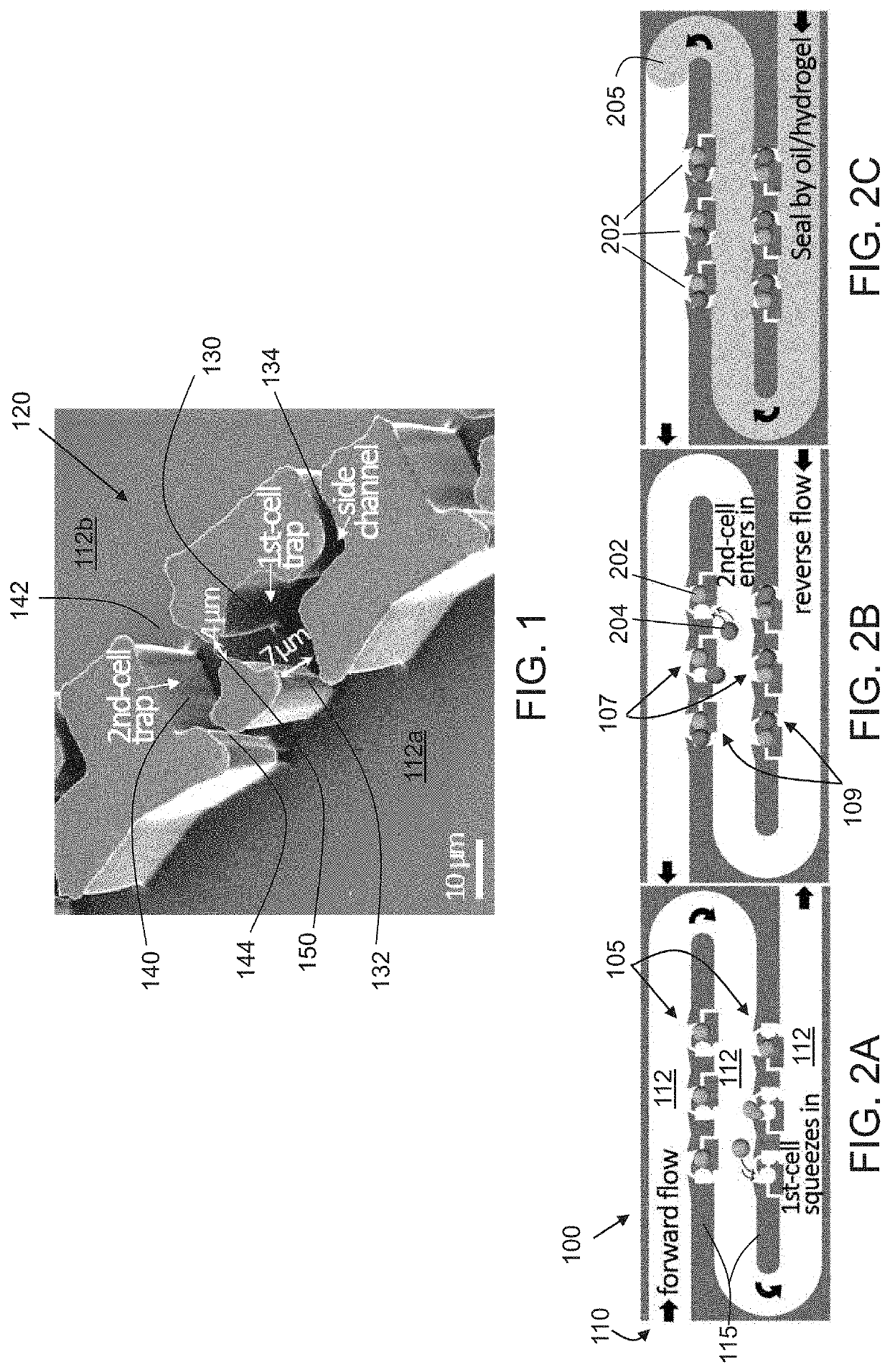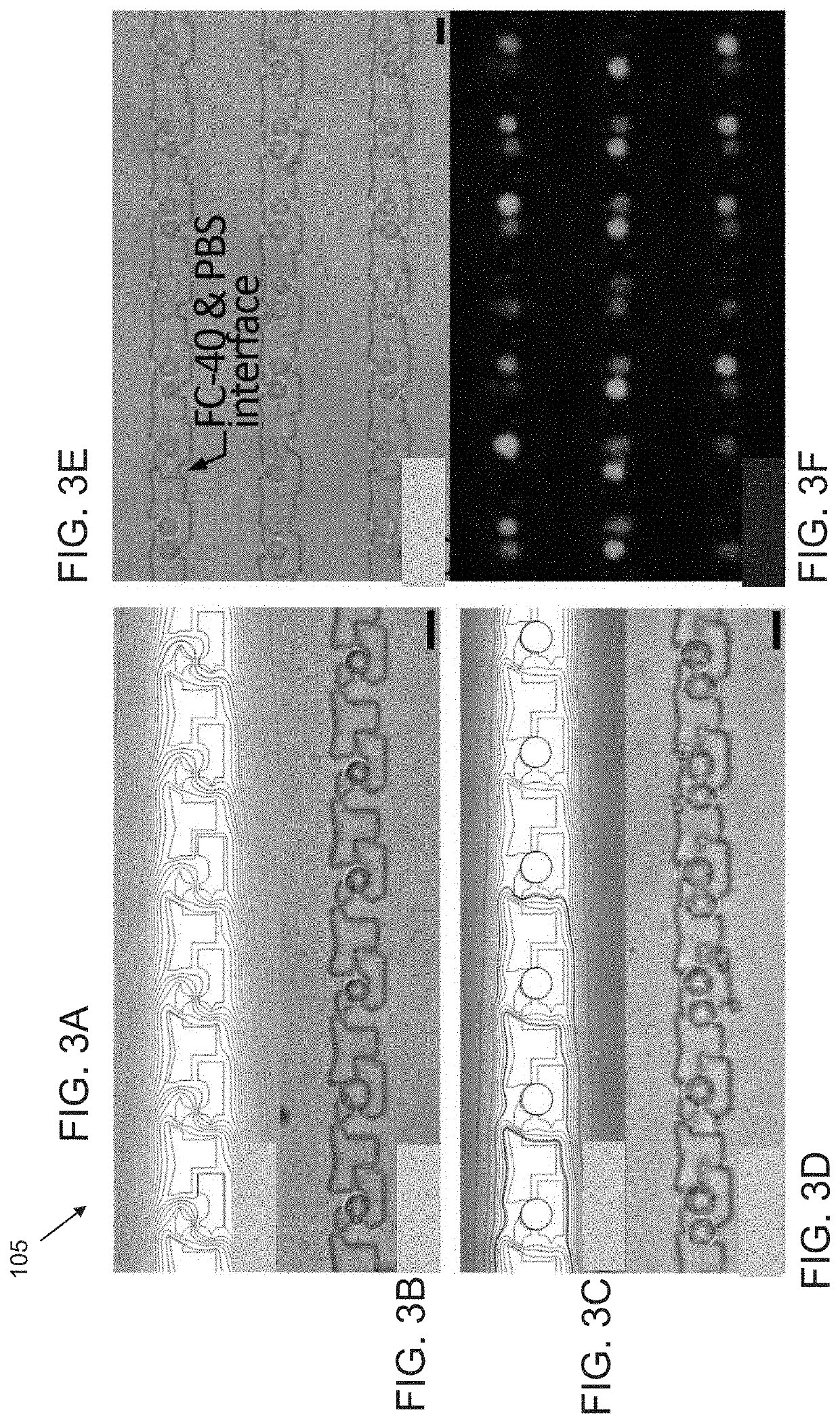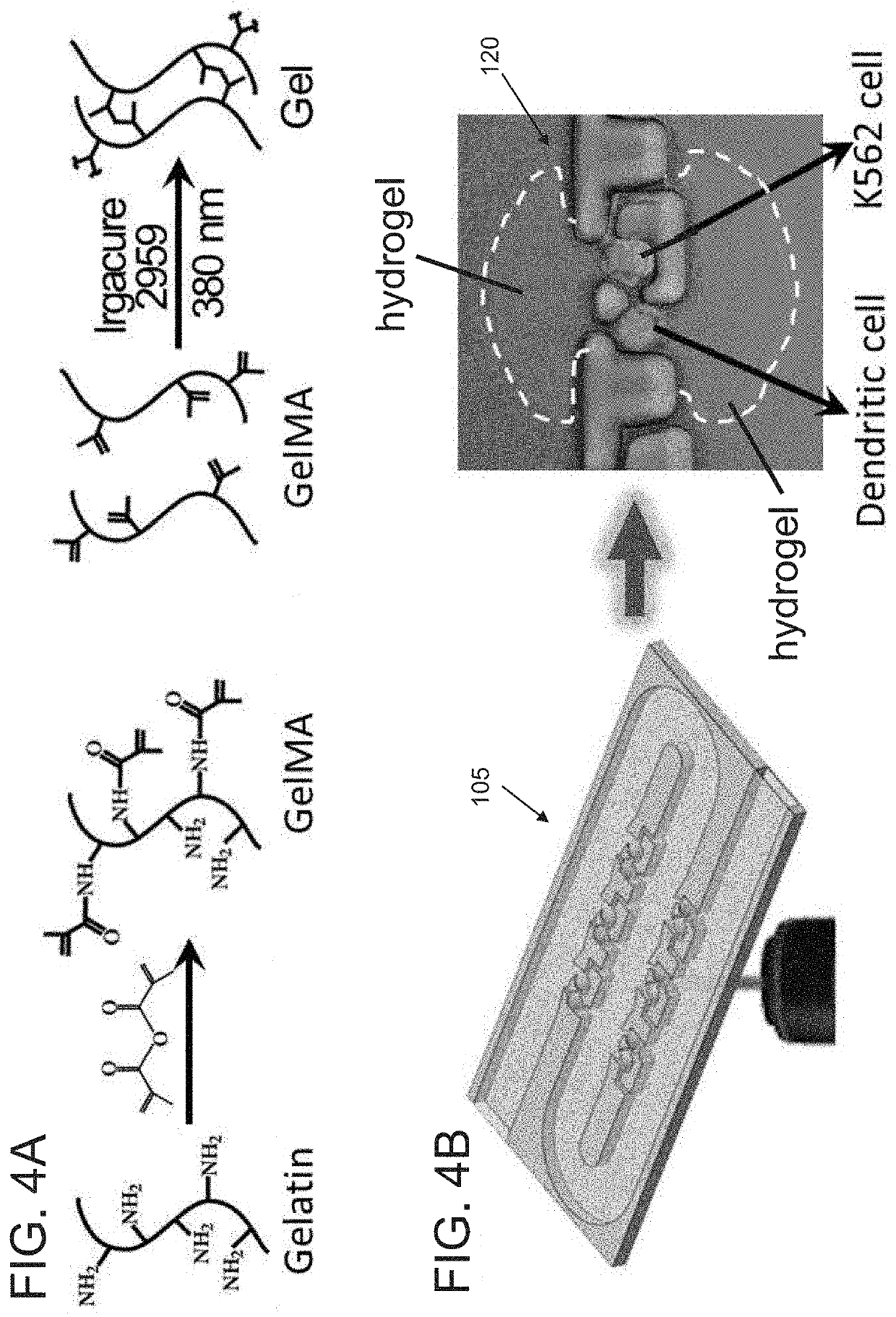Microfluidic single-cell pairing array for studying cell-cell interactions in isolated compartments
- Summary
- Abstract
- Description
- Claims
- Application Information
AI Technical Summary
Benefits of technology
Problems solved by technology
Method used
Image
Examples
example
[0060]The following is a non-limiting example of the present invention. It is to be understood that said example is not intended to limit the present invention in any way. Equivalents or substitutes are within the scope of the present invention.
[0061]Chip Design
[0062]In an exemplary embodiment, the cell-pairing array, which may comprise a serpentine channel with 10 double-cell traps along each row, works by hydrodynamic sequential arraying and flow-induced cell deformability. Traps in adjacent rows are in a mirrored configuration because of the serpentine shape. Each trapping unit, as shown in the scanning-electron-microscopic (SEM) image (FIG. 1), has a first cell trap with a narrow opening facing the forward-flow direction, and a second cell trap with a narrow opening facing the reverse-flow direction. The trap size is similar to the target cell diameter to secure single-cell occupancy, and the two traps are connected by an opening in between to allow direct cell-cell contact for ...
PUM
 Login to View More
Login to View More Abstract
Description
Claims
Application Information
 Login to View More
Login to View More - R&D
- Intellectual Property
- Life Sciences
- Materials
- Tech Scout
- Unparalleled Data Quality
- Higher Quality Content
- 60% Fewer Hallucinations
Browse by: Latest US Patents, China's latest patents, Technical Efficacy Thesaurus, Application Domain, Technology Topic, Popular Technical Reports.
© 2025 PatSnap. All rights reserved.Legal|Privacy policy|Modern Slavery Act Transparency Statement|Sitemap|About US| Contact US: help@patsnap.com



